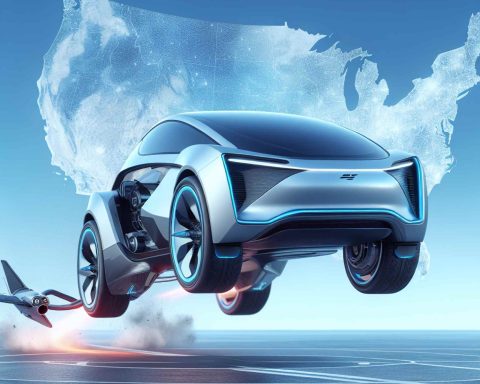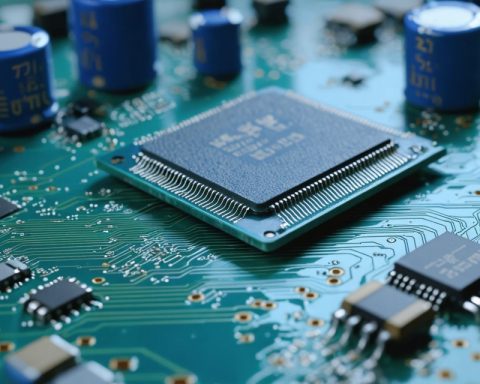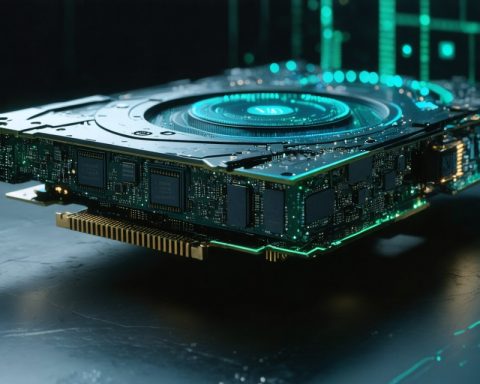- KULR Technology is utilizing carbon fiber materials for superior thermal management in smartphones.
- Their solutions, initially developed for aerospace and defense, aim to extend battery life and improve device performance.
- Carbon fiber offers high thermal conductivity and low weight, outperforming traditional metal heat sinks.
- Challenges include the cost of advanced materials and scaling production for widespread industry adoption.
- As smartphones evolve with 5G and AR, efficient heat management becomes crucial, offering KULR significant market opportunities.
- KULR’s innovations could lead to more sustainable and eco-friendly smartphones.
In a world where smartphones are becoming ever more powerful, one challenge looms large: managing the heat they generate. Enter the trailblazer, KULR Technology, with its cutting-edge solutions initially crafted for aerospace and defense sectors. Now, they are revolutionizing personal tech by tackling heat dissipation head-on to ensure longer battery life and sustained device performance.
Innovative Manufacturing
At the core of KULR’s innovation are carbon fiber materials, which offer an impressive combination of high thermal conductivity and low weight. This is a game-changer for cooling systems, as it beats traditional metal heat sinks. The result? Devices that can excel in performance without overheating, ensuring seamless user experiences during high-powered activities like gaming or multitasking with 5G or AI features.
The Ups and Downs
KULR’s thermal management systems bring a host of benefits. Devices run smoother, batteries last longer, and the tech helps reduce electronic waste by extending device lifespan. However, these advanced materials can be costly, which might impact pricing. Moreover, scaling this innovation for mass production across the entire industry is a logistical challenge that KULR needs to address.
Shaping a Sustainable Future
As smartphones integrate advanced functionalities like 5G and augmented reality, the need for efficient thermal solutions grows. KULR stands at the forefront, ready to capture a significant slice of the market with scalable and accessible innovations. The future points towards more sustainable, efficient, and eco-friendly smartphones, and KULR’s pioneering use of carbon fiber could lead the charge.
Keep an eye on KULR Technology as they redefine the smartphone landscape, promising a future where our devices are not only more powerful but also cooler and greener.
How KULR Technology is Transforming the Smartphone Market with Thermal Innovations
Latest Innovations and Insights in Smartphone Cooling
KULR Technology’s work highlights the crucial role of thermal management in today’s increasingly powerful smartphones. Here are key insights into their groundbreaking approach:
1. Advanced Carbon Fiber Technology: At the heart of KULR Technology’s innovation is the use of carbon fiber materials. These materials are lightweight yet possess high thermal conductivity, enabling devices to maintain optimum performance without overheating.
2. Market Impact and Forecasts: With the growing demands of 5G and AI, KULR’s thermal solutions are predicted to experience an uptick in adoption, potentially capturing a noticeable share of the smartphone cooling market. Their technology not only enhances performance but promises significant reductions in electronic waste through prolonged device lifespans.
3. Pros and Cons: While KULR’s solutions bring clear benefits such as smoother device operation and enhanced battery life, the high cost of carbon fiber materials may influence overall product pricing. Additionally, scaling production to meet global demand remains a key challenge.
Key Questions about KULR’s Role in Smartphone Innovation
1. How does KULR Technology’s cooling system work, and why is it effective?
KULR Technology utilizes carbon fiber materials known for their superior thermal conductivity. This enables effective heat dissipation, preventing devices from overheating, particularly during intensive tasks like gaming and multitasking with advanced technologies like 5G and AI.
2. What challenges does KULR face in commercializing their cooling solutions?
Commercialization hurdles include the high cost of carbon fiber materials and the logistical difficulty of scaling these solutions for mass production across various manufacturers. Successfully overcoming these challenges will be key to KULR’s market penetration.
3. How could KULR Technology influence sustainability in the smartphone industry?
By prolonging the lifespan of devices through improved thermal management, KULR can significantly lower electronic waste. This represents a critical step towards the production of eco-friendlier smartphones, aligning with global sustainability goals.
Related Links for Further Exploration
For more information on KULR Technology and their groundbreaking innovations, visit their official website: KULR Technology.


















